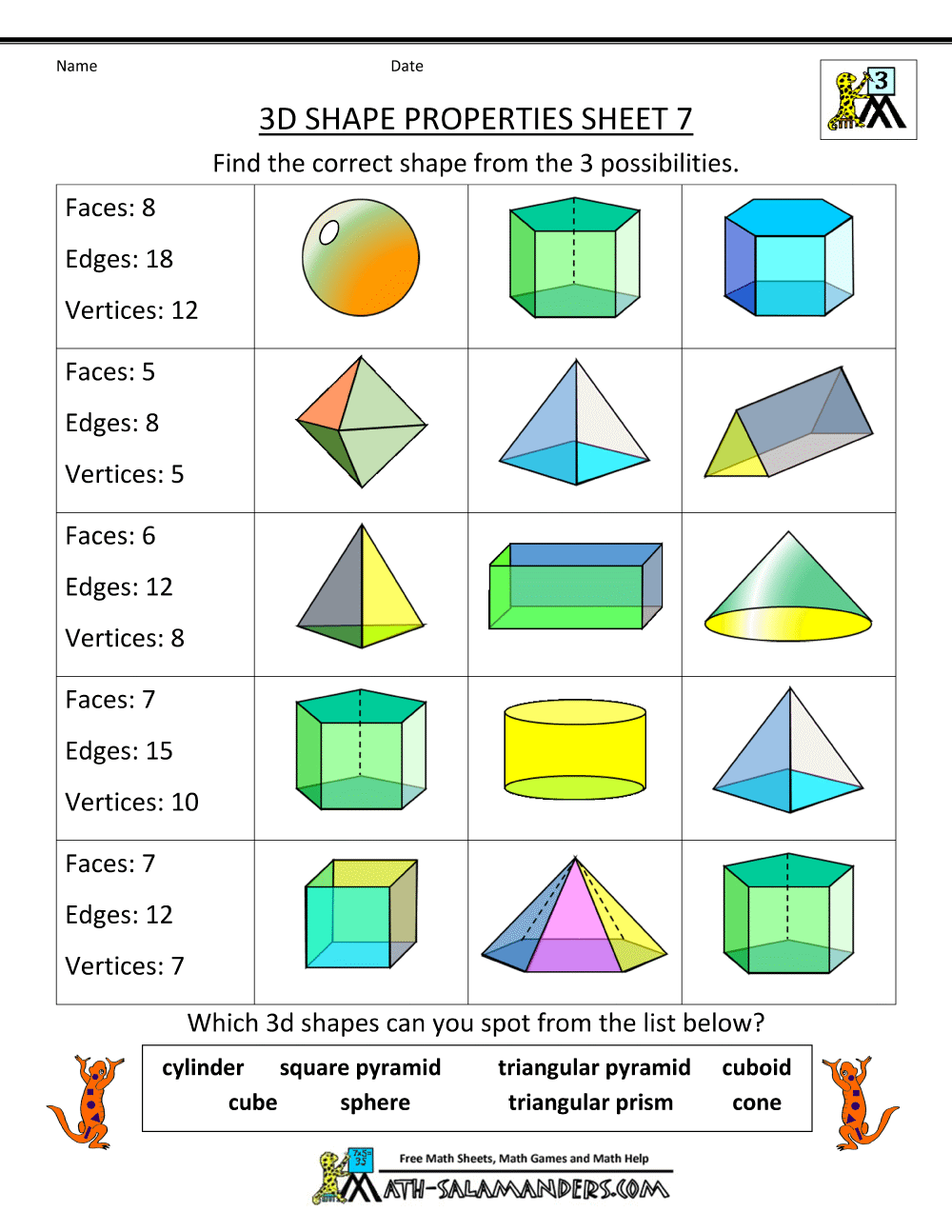

I form a circle with one hand and pretend like I’m pulling the edges out (keeping my pulling hand in a “c” shape) – creating an imaginary circle – the body of the cylinder. To explain what a cylinder is, I like to explain that it’s a circle that has been streeeeeetched out. I mimic the same motions holding a flat square and blowing air into it to create a cube – all just using my hands. You can then flatten or “squash” the imaginary 3D shape and turn it back into a 2D shape to reinforce the concept.

The flat circle now has become a solid sphere like a balloon.Then hold your hands up to your mouth as if to blow air into the circle (adding the dimension of filling up space) and curl your fingers as you blow… forming a sphere with your hands.Put your hands together like you have a circle pancake in between.Here’s how I liked to use motions to explain the difference between a circle and a sphere: I’ll start by sharing my hand motions with you and do my best to describe them. Modeling What Makes a 3D Shape Hand Motions I personally used hand motions and a chant to explain that 2D shapes are flat and 3D shapes are solid. When it comes to teaching 3D shapes, we use what we know about those 2D shapes and add in the concept of flat vs. Let me back up by sharing that when we explain what 2D shapes are to our students – we do so by describing the features of each shape: sides, vertices (corners). The main thing I like to cover, when explaining 3D shapes to kindergarten, is the missing/added dimension. Activities and Videos to Teach 2D Shapes.
#2d shapes and 3d shapes how to#
Teach: How To Draw 2D Shapes in Kindergarten.27 Creative Ways to Make Teaching 2D Shapes Happen.If you’re looking for how to explain 2D shapes to kindergarten then you should check out these awesome ideas below because the best way to explain 2D shapes to kindergarten is to describe 2D shapes by their features. Let me share my favorite way of doing this. Unlike books, our courses regularly revise work so that knowledge becomes firmly embedded and secure.People often wonder how to explain 3D shapes to kindergarten (especially when they have to be able to tell the difference between 2D and 3D shapes). We introduce these shapes and then extend learning as we go. Learning Street courses help children to identify and understand 2D and 3D shapes in a structured way through our courses. How does Learning Street help children with 2D and 3D shapes? This will also help children see that shapes have different dimensions and angles. For example, a cereal box is a cuboid, a tennis ball is a sphere and a dice is a cube. When first teaching children about 3D shapes, it can be helpful to get them to name the shapes of certain items in the house to help them visualise what a 3D shape is. How to help children with 2D and 3D shapes? Teachers will show children the different parts of a circle, such as the diameter, circumference and radius, which might lead on to calculating the area of a circle. In Year 6 children will be introduced to making nets of 3D shapes and will learn about parallel and perpendicular edges. Teachers will expect children to recognise 3D shapes from 2D drawings and they will also be taught the difference between regular and irregular polygons. Children will also be asked to draw angles using a protractor, they might be given questions asking them to find missing angles of basic shapes. Teachers will go on to introduce reflex angles (between 180˚ and 360˚) in Year 5, asking children to compare them to obtuse and acute angles. They will be taught about quadrilaterals (4 sided 2D shapes) and compare them to the properties of triangles. This is also when children will be required to identify lines of symmetry in 2D shapes. In Year 4 teachers will ask children to identify obtuse angles (angles between 90˚ and 180˚) and acute angles (less than 90˚). This might be taught by asking children to stand up and turn themselves a certain number of right angles.
#2d shapes and 3d shapes full#
They will also be introduced to angles and taught how many right angles make a half, three-quarter and full turn. Teachers will also introduce them to 3D shapes, this might include making 3D shapes. In Year 3 children should be comfortable drawing 2D shapes like the ones above. What are children expected to know about 2D and 3D shapes in KS2? These are the 3D shapes they should know: Here are the 2D shapes that children are expected to know: They will learn that 2D shapes are flat shapes, whereas 3D shapes have 3 dimensions (length, depth and width). What are the names of 2D and 3D shapes? Children are taught the names of different 2D (two-dimensional) and 3D (three-dimensional) shapes throughout primary school.


 0 kommentar(er)
0 kommentar(er)
